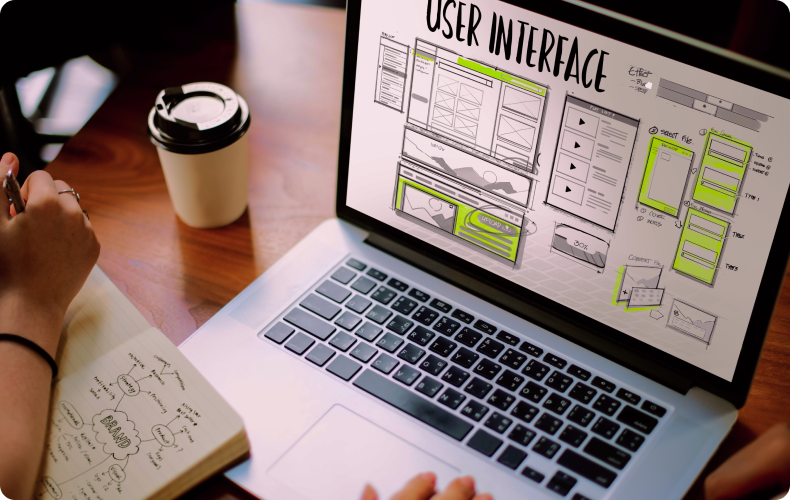What is Shopify Headless?
Shopify headless decouples your store\'s frontend (what shoppers see) from Shopify\'s backend (catalog, cart, checkout, orders). Your UI is built with modern frameworks while Shopify continues to power commerce reliability, security, and scale. This separation gives you the freedom to ship unique experiences without theme constraints and to optimize performance for Core Web Vitals.
Who is headless for?
- Brands that have outgrown theme limitations and need full design control.
- Teams with performance targets (LCP/INP/CLS) where custom rendering and caching strategies are required.
- Multi-surface businesses that want one commerce backend across web, mobile apps, kiosks, and more.
- Companies investing in content-rich journeys and bespoke UX.
Architecture at a glance
Frontend
A custom storefront rendered by a modern framework (e.g., React via Next.js). You own routes, components, accessibility, and visual identity. Static generation and edge caching can deliver exceptional speed.
Commerce backend (Shopify)
Shopify remains the source of truth for products, collections, prices, customers, orders, discounts, and checkout.
APIs
The frontend communicates with Shopify using the Storefront API (GraphQL) for fast product queries and cart operations. Learn more: Shopify Storefront API.
CDN and caching
Use static pre-rendering, HTTP caching, and edge networks to serve pages with minimal latency. Tune revalidation windows to balance freshness and speed.
Core benefits
Performance and SEO control
Own rendering strategies, prefetch critical data, and eliminate layout shifts to achieve excellent Core Web Vitals.
Experience freedom
Build unique layouts, content models, and interactions beyond theme constraints while still relying on Shopify for checkout and operations.
Omnichannel reach
Power multiple frontends (web, native apps, in-store screens) from a single commerce backend.
Trade-offs to consider
Headless introduces more moving parts: hosting, CI/CD, observability, and API integration. Teams should weigh the complexity and ongoing maintenance against the measurable gains in speed, conversion, and brand differentiation.
How Shopify Hydrogen fits in
Hydrogen is Shopify\'s React framework for custom storefronts. It provides primitives, routing, and starter kits to accelerate builds. Read our overview of Shopify Hydrogen, and explore the official Hydrogen docs here: Hydrogen documentation.
Implementation roadmap
Define goals and metrics
Align on conversion, speed, and UX outcomes. Establish a baseline Lighthouse report and analytics funnels.
Choose your stack
Next.js + Storefront API is a common choice. Validate hosting, edge caching, and image optimization strategies early.
Model content and navigation
Decide how product content, discovery, and editorial pieces will be maintained—whether in Shopify, a CMS, or both.
Implement product discovery
Build performant collection, search, and PDP experiences with fast image delivery and predictable loading states.
Cart and checkout
Use Shopify\'s cart APIs and redirect to the hosted checkout or use checkout extensibility where appropriate.
Observability and QA
Add logging, error tracking, and synthetic checks. Validate accessibility and Core Web Vitals before launch.
Iterate
Ship improvements in small batches. Re-measure Lighthouse and conversion after each change.
SEO and performance playbook
- Pre-render pages and cache at the edge; avoid layout shifts with stable containers and aspect ratios.
- Use the Next.js Image component for responsive, optimized media.
- Keep third-party scripts minimal and defer non-critical code.
- Link internally to related guides for topical authority—see What is Shopify Headless?.
- Follow Shopify\'s guidance on custom storefronts: Shopify Custom Storefronts.
Costs and risks
Expect higher upfront engineering investment and ongoing ownership of infrastructure, observability, and QA. Adoption makes the most sense when you can tie speed and UX improvements to revenue or brand impact.
Headless vs. theme: when to choose each
Choose headless when you need bespoke UX, strict performance targets, and multi-surface consistency. Stick with a theme when a fast, lower-cost setup suffices and customization demands are modest.
FAQs
Is headless right for small stores?
Often, a well-optimized theme is enough. Consider headless when you\'re hitting platform limits or have clear growth targets.
Can I migrate gradually?
Yes. Start with content pages or a collection experience, then expand to PDP, cart, and beyond.
